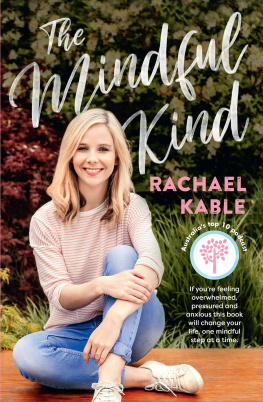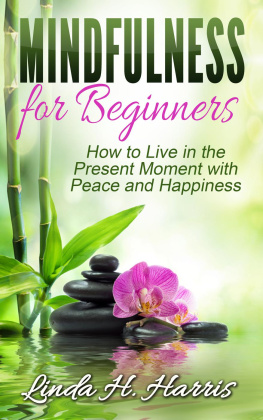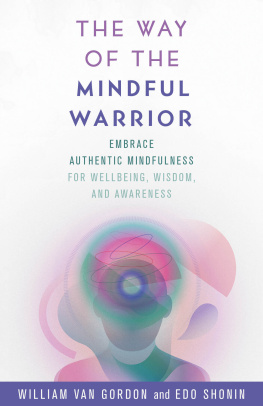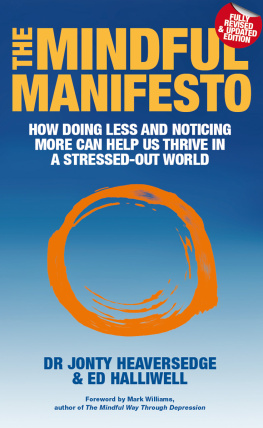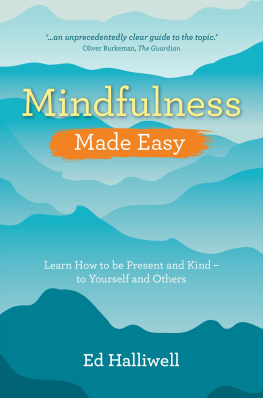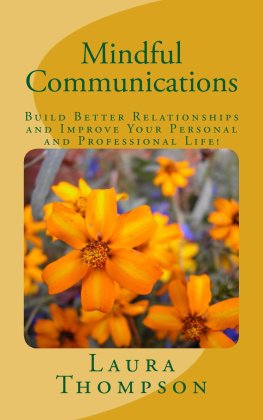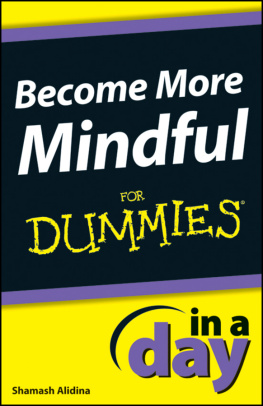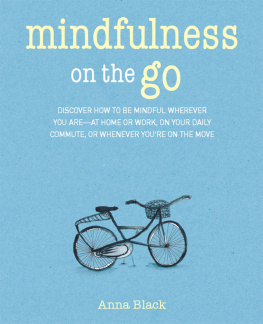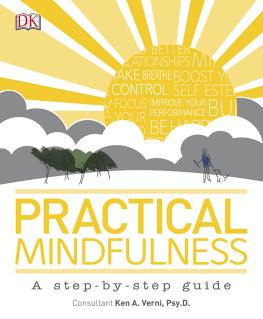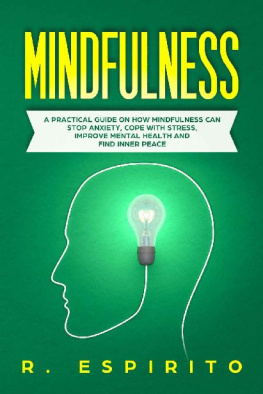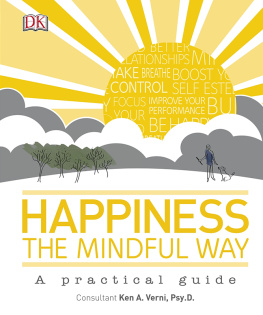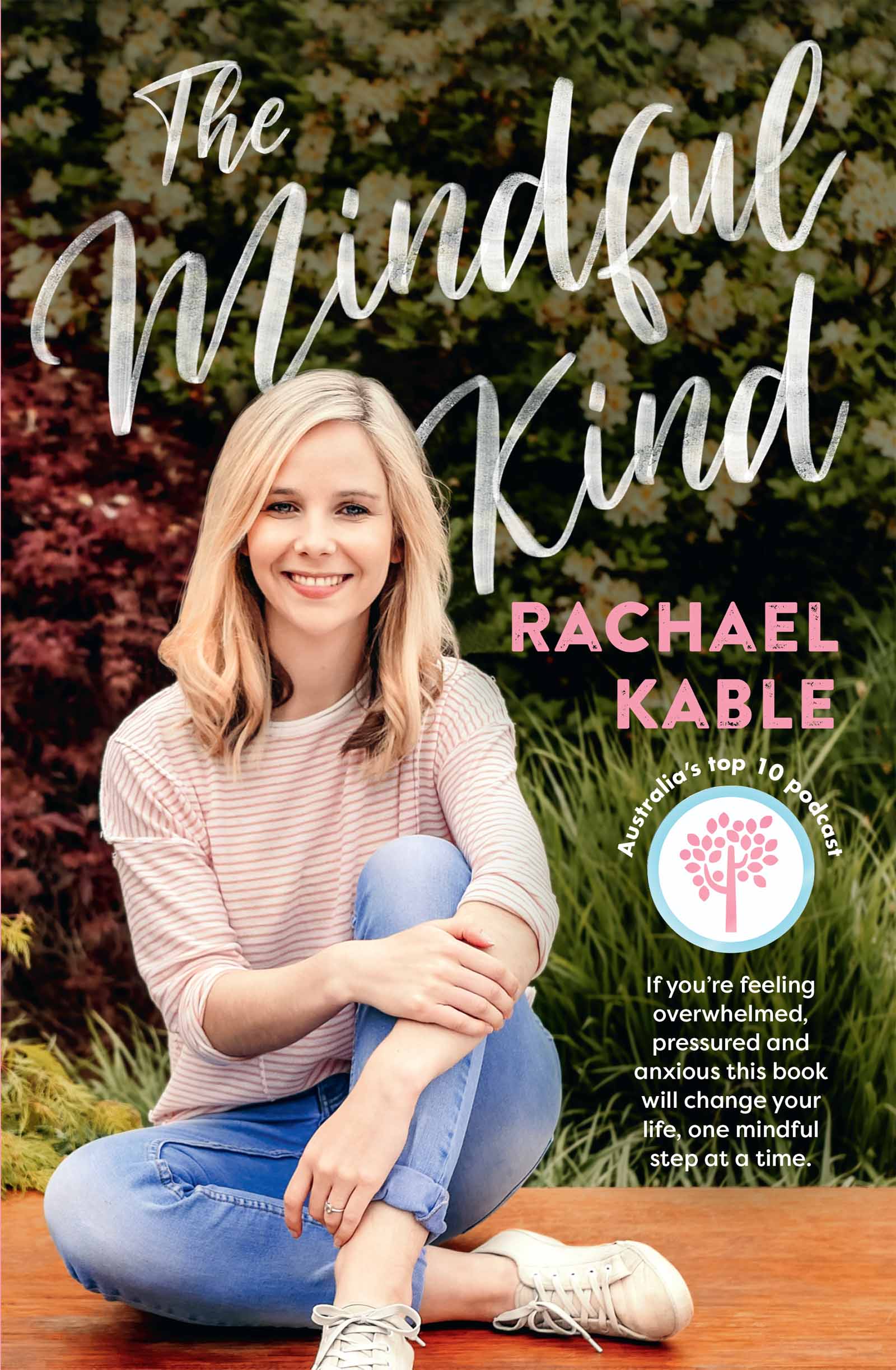Contents
Guide
CONTENTS
How often do you experience the present moment with a sense of openness and curiosity?
When you picked up this book, did you notice the colours on the cover and the weight of it in your hands? Did you hear the sound of the paper as you flicked to this page? Can you see the shapes of the letters, the blank areas, the perfectly rounded full stops?
Welcome to the world of mindfulness.
Its not a complicated world, nor a difficult one. Mindfulness is experiencing the present moment, without labels or judgement. It can be as simple as feeling a breath move in and out of your body or noticing the solid ground underneath your feet.
Yet how often do you find yourself out of the present moment? Thinking about an upcoming work deadline while youre lying in bed at night? Writing a mental shopping list of the groceries you need to buy while youre doing a relaxing yoga class? Eating dinner on a Sunday night and feeling a growing sense of dread as you imagine yourself going to work the following morning and opening up your email inbox?
Mindfulness itself may not be complicated or difficult, but it can still be challenging to practise. Many of us have been conditioned to worry about the future and ruminate over the past, so we regularly miss the present moment because our minds are tied up elsewhere. It can actually take a deliberate choice and effort to engage in mindfulness, but the more we do, the easier it can become.
As a teenager, I struggled regularly with stress, anxiety and low self-esteem. I felt unable to stop myself from thinking about things I regretted, or things I was worried about. I judged myself for being too shy, too short, too pimply, too boring, too stupid. Deep down, I knew I was making myself miserable and I also knew I was the only person who could change it.
In a bid to understand myself better, I decided to study psychology at university. The more I learned, the more passionate I felt about using my knowledge and skills to create a better life for myself and to work towards helping others do the same.
In my second year of study, I started volunteering on a helpline, and during the training I was taught a mindfulness technique. I felt a sudden moment of clarity; being mindful genuinely helped my erratic mind to slow down. I experienced a break from my stress and noticed a sense of calm and ease as I became more present in the moment.
Since that day, Ive tried to implement mindfulness into my life in various ways. I started to practise mindful breathing when I couldnt sleep at night and used my senses deliberately during everyday activities, like cooking and showering. I encouraged myself to observe and explore different emotions, rather than chase happiness and avoid pain. I began to see the meaning in simple activities, like walking my dog or watering a plant, because they were opportunities to cultivate mindfulness when I would normally be lost in my thoughts.
Gradually, being more mindful changed my life in various, little ways that ultimately created big changes. I noticed benefits in my relationships, physical health and wellbeing, work and social media use. I had a greater sense of enjoyment of creative activities and hobbies. I felt more resilient and better equipped to manage my stress and anxiety. The nonjudgement I practised during mindfulness started translating into kinder self-talk, more open-mindedness towards others and less shame around my mistakes and shortcomings.
When I started talking about mindfulness on my podcast, The Mindful Kind, I received a multitude of messages from people who were noticing similar changes in themselves. I heard from a man in the US who began experiencing peaceful moments of reflection after many years of self-loathing and insecurity. A young woman sent me a comment via Instagram to explain how some slow mindful moments helped her experience a sense of calm acceptance after her partner was deployed in the armed services. Ive heard from people experiencing grief, loneliness, physical pain and anxiety, who felt supported by their mindfulness practices.
I wrote this book because I wanted to share simple and meaningful ways for you to practise mindfulness that can easily be integrated into your everyday life. Youll discover mindfulness and meditation techniques to help relieve stress and anxiety, and practices to build your sense of overall wellbeing.
When I was studying, one of the strategies I learned was called the Wheel of Life. It was designed to help you discover which areas of your life need your attention. Basically, you draw a circle and divide it into sections (like a pizza), and you label each section with an important area of your life. For example, one section might be labelled self-care, another section might be work, another section might be hobbies and creativity, and so on. You then rate each section out of 10, based on how satisfied you are with it. For example, if you enjoy a number of fulfilling relationships, you might rate that section an 8 out of 10. If you feel as though you never have time for hobbies or creativity any more, you might rate that section a 2 out of 10.
I created this book with the hope that mindfulness can help you improve each important area of your life. I hope that Part Two about relationships will help you communicate better (and more mindfully!) and deliberately foster more love and support. I hope that Part Four about health and wellbeing will help you practise mindfulness to experience better sleep, more meaningful exercise and mindful eating. I hope that by the end of this book, the rating for each little slice of your own Wheel of Life will be higher.
I recommend that you read through this book chapter by chapter, as each one builds on the last. However, if you find yourself experiencing a particularly stressful or overwhelming time, you can turn to the Appendix to find a collection of breathing techniques, mindfulness practices and meditations.
Theres just one more thing to remember as you read this book. No mindfulness journey is exactly the same and Id love you to try all these techniques with an open mind. Notice which ones resonate with you, work on those which challenge you, and allow your mindfulness or meditation practice to grow and evolve.
I hope you enjoy being part of The Mindful Kind.
With love,
Rach
Imagine a safe and comfortable home. Its quiet and cosy, filled with all of your favourite things. You know your home so well that you could find your way around in the dark and when its stormy outside, its the perfect place to take refuge.
Your comfort zone is just like your home. Its a secure place where you can stay within the boundaries and feel comfortable and safe.
However, we tend to enjoy exploring outside our homes, too. Without exploration, we grow bored and frustrated and isolated. We miss feeling the sunshine on our skin, the thrill of discovering new places, the challenges that arise from the unknown.
And the more we explore, the more we become familiar with new parts of the world. Initially, we might become familiar with our neighbourhood, then places we visit regularly (such as work, shops, school or friends houses), then other states, or even different countries!
The same is true of our comfort zones. The further we explore outside them, the more our comfort zones expand. As the psychologist Abraham Maslow once said, In any given moment, we have two options: to step forward into growth or to step back into safety.
Of course, stepping forward isnt always easy and neither will it guarantee success. For these reasons, I think its incredibly important to focus on one thing: going outside your comfort zone will always teach you something. Perhaps its not something you expect to be taught! You may find yourself learning from mistakes, feeling a range of challenging emotions, realising hard truths, or finding out more about yourself and your capabilities. You may even find yourself wishing youd taken a different path or stayed within your comfort zone and it wont be until later that you can look back and feel grateful for making the choice to venture out there.

